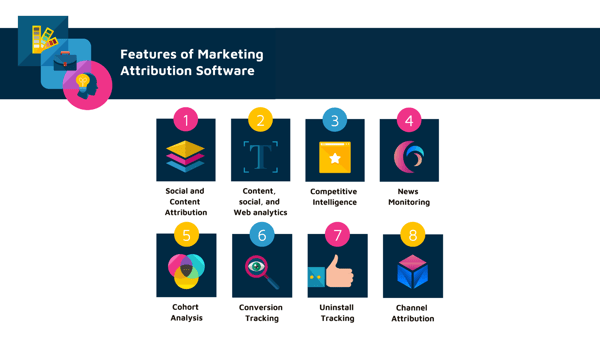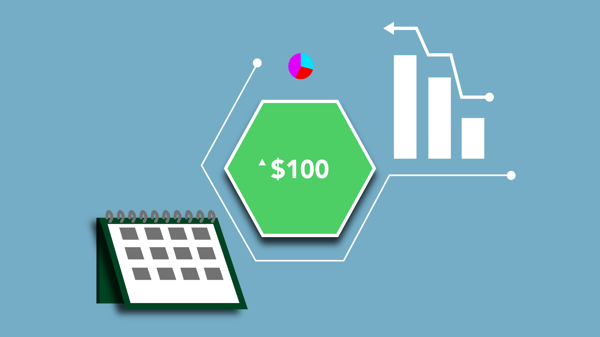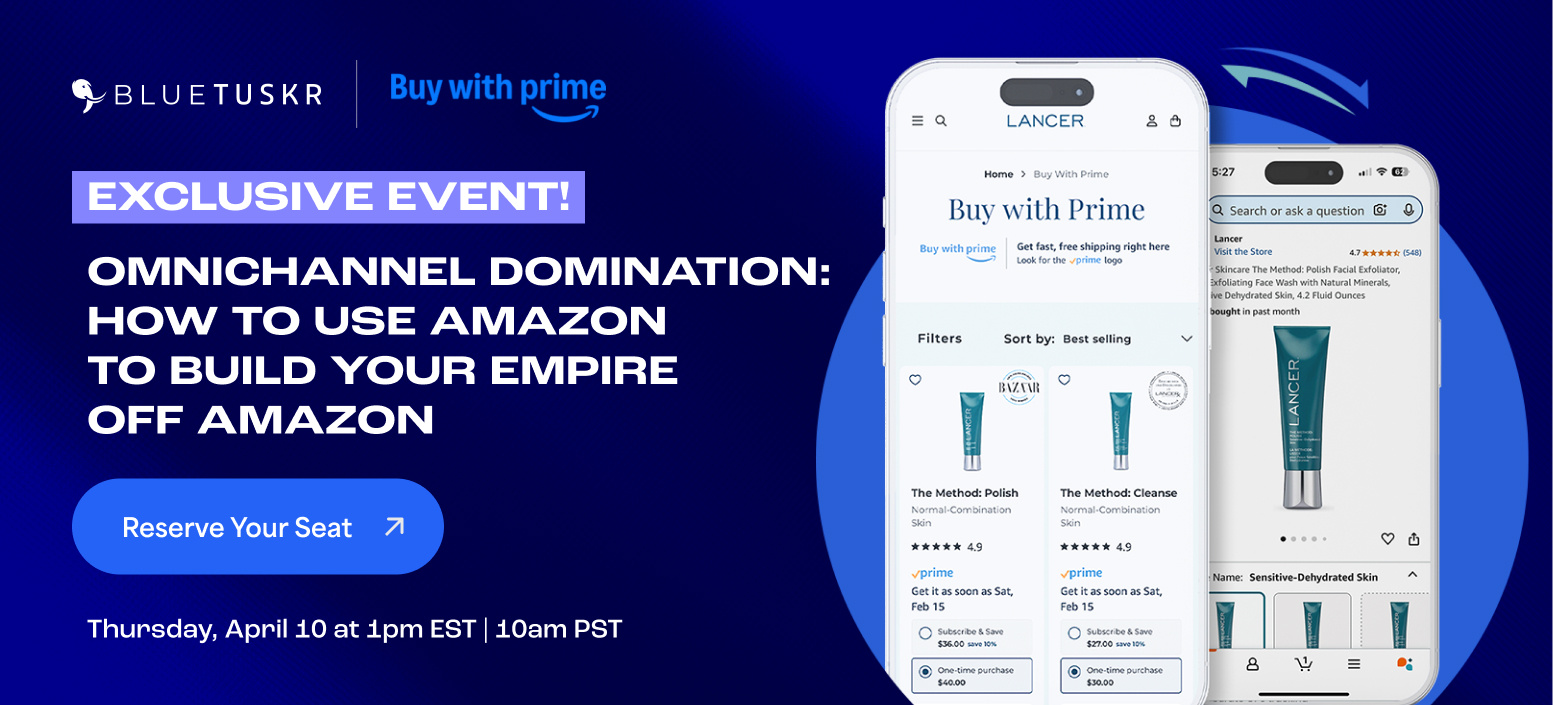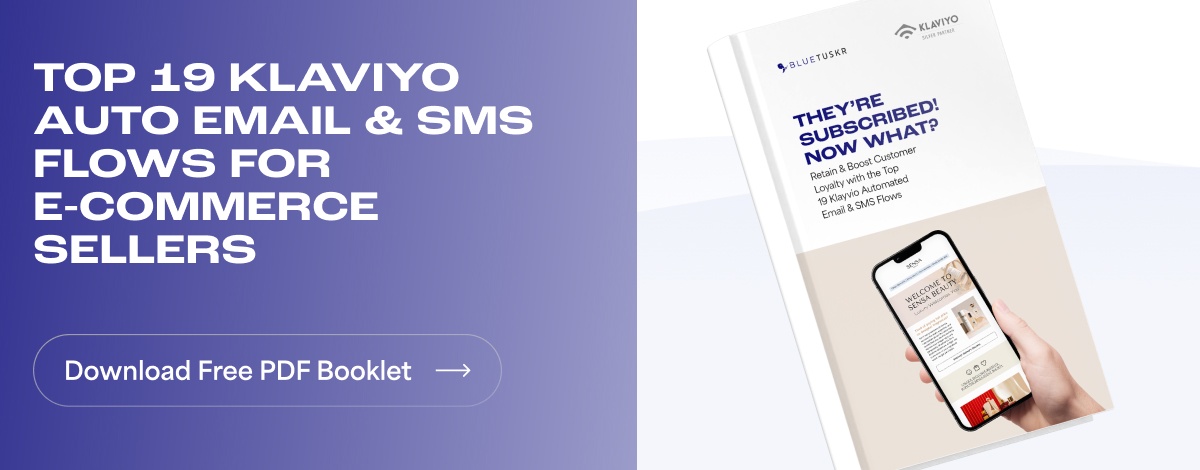E-commerce Paid Advertising Attribution Post IOS Changes and How To Track Results

Hello, and welcome to another Whiteboard Sessions with me Andrew Maff. I'm the founder and CEO of BlueTuskr are a full-service digital marketing company for E-commerce sellers. And today I'm going to go through e-commerce paid advertising attribution, and how to track your results, especially after the iOS change. This is very controversial, like, what's up with attribution tracking? And why can't we track stuff and blah, blah? And a lot of the things that I always talk about is that most sellers don't realize we had this issue way before iOS problems.
If you were diversified, and selling on multiple places like Amazon, Walmart, eBay, and your own site, and all that fun stuff. So I'm gonna kind of walk through a few different things here and stay with me because I'm gonna go off on a bit of a tangent, I'm sure. But I kind of want to start to paint the picture of what the funnel looks like. So you can understand why attribution tracking isn't as easy as it once was, and why it's also kind of not accurate.

Be Diversified
So now, we're gonna pretend that you are selling on your own site, right? You're also selling on Amazon, you're selling on Walmart, let's say your stuff on eBay, whatever. All the advertising that you're running on Amazon, is all within this platform. Same thing with Walmart. Same thing with eBay. So if you run ads on Amazon, most of that traffic, I would say 99.9% of that traffic is staying on Amazon, your website, a little different. So let's say you're running social ads, right? You got Google stuff going, maybe you're doing a thing to you got SEO girl and you got remail going like any anything.
Most of the time, if you are diversified enough, where you're doing enough revenue on all of these chances are all of these aspects are being targeted to your website. And you might be treating these like separate businesses where it's almost like that's the eBay channel, nothing else. I'm not driving traffic to eBay, same a Walmart, Amazon, some Amazon sellers like to drive traffic directly to Amazon.
If you've got enough revenue on your website, typically, you're focusing all these things on your website. So let's say we're going to our website, right? Here's the thing. Because marketplaces gardens, where they are now and they've gotten so big, people are really comfortable shopping on Amazon, everyone in their mother has a prime account, Walmart's doing what it can to fight its way eBay is really good if it's, you know, less expensive products, and you're kind of in that same niche there.

Drive Traffic to your Website
So sometimes you will definitely see people that will come in through one of your top funnel strategies come to your website. And depending on the situation, if you're available on other marketplaces, they're going to leave, and they're going to go to Amazon or Walmart or eBay or wherever they're more comfortable most of the time to Amazon. And they're going to look into purchasing your product there.
So what's now happened is you've driven all this traffic to your website, but then they left and when to one of these. Not always the case, but definitely can be the case. The problem with attribution tracking is partially this, right, is you're tracking how many people are going to your website. But you don't really know how many left and may have purchased with you on Amazon.
One of the things that we always suggest doing is to look at let's say these are social ads, right? So we stick to paid ads strategy here you have Google ads, which is to look at this advertising spend, and this one, this one, and this one, combine them all together to get a total paid ad spend, right? And then look at your total revenue for each of them, even your website, and look at what was your total revenue. This will give you obviously, your gross margin, right? Not going to paint the perfect picture.
But what happens is, there are so many different situations now because of the way that the average consumer shops. So it's no longer like you send them to one place and they shop on your site or anything like that. Now they might go to your site, and then they may go to Amazon, or they may see in some cases, you'll run Facebook ads, where if you're doing it as a seven-day click and a one-day view through which is relatively standard.

Campaign Ads
You're going to get someone who clicks on an ad on Facebook maybe then leaves and then gets retargeted by a display ad on Google and if they see that display ad both take credit. It's also very possible you get people who see your ad Your Facebook ad ended up googling you clicking on a branded campaign if you're running that, and now both take credit. So all of a sudden, when you're reading the data within each platform, it's not as straightforward as you want it to be.
There have been some cases where we've worked with clients where they had, you know, relatively significantly low organic traffic, in which case, almost all of their traffic was coming from paid advertising at the time, and it looked like they had 500 conversions. But when you went to their website, it turns out, they only had 450. And the reason was, is because these were sometimes double, taking credit for the ads that we were running, as opposed to what actually happened.

Attribution Software
Now, attribution software, there's a ton of them out there, where you can upload your pixel onto the site, you do all UTM codes, you track it that way, Google's got something that's kind of like that, you can do it sometimes through Google Analytics, Facebook has something that's like, okay, there's obviously all the other software's out there. The problem with all of those obviously comes from Amazon's not giving up its data, neither is Walmart nor is eBay.
So this whole aspect is still out the window, the best way to look at that aspect is if you decide I'm going to increase my revenue, or I'm sorry, my paid ads, men by 10%, on Facebook ads. Don't look at the revenue increase on your website, look at the percentage increase that you did across all of your paid ads spend. Then look at that same percentage was increased by all of your revenue because especially with social ads, you're getting so much brand awareness that it's also possible that people are shopping with you on Amazon, there have been countless times where we'll increase Facebook ad spend, and see revenue on the website go up just a little bit.

Funnels Fluidity
But then see the remainder that we would have expected show up on Amazon. So by looking by not acknowledging the fluidity of the entire customer funnel, you're missing out by potentially increasing ad spend on some it may not be working as well as decreasing it on something that may be working great. And you can't really tell because it how fluid it is. So by looking at everything really high level, you now have the ability to kind of understand like, okay, just like traditional marketing, you can't really track how well you did through one specific billboard, you can't tell how well you did through one specific radio play that you did.
So back then that was how they tracked these things. As they looked at how much spend did we get? How many eyeballs did we get? And then what revenue did that get us? Getting nitty-gritty into each and every channel is obviously very necessary because we still have that benefit by being in digital marketing, you also have to factor in this everything is so fluid now there's just not as simple as it once was.
So if you look at this and more of a traditional marketing approach, as opposed to a digital marketing approach, you can see how much did you spend? And what did you get? At the end of the day, all we care about is profit, right? All we want to know is that we're profiting money. So if we're spending x, are we getting why? And if we're not then dig into each individual channel and figure out which one is falling off? And which one are we having trouble with?

Increasing your Ad Spend
Then if you're discussing where do I want to start increasing my ad spend, that's when you go into each channel. Now you have to dig into what is Facebook saying we're getting. Then you have to also understand the channel itself. This is the very top of the funnel, people may leave and they may go to Amazon, they may go to your website, they may go to Walmart, you don't know, Google a little bit more mid-funnel, they're actively searching for a solution.
Chances are if they went to your website, it's a good chance that they converted, but it's also very possible that they left. So there are some other things you have to keep in mind about each individual channel about how that channel is used for the consumer. By looking at the activity on the channel, the overall spend, and then the overall revenue for all of your channels, you can start to paint a picture of what's working, what's not iOS changes have obviously thrown a huge wrench in this where we no longer have the 180 days or whatever data that we've had, in most cases.
Now we only have about seven days. So your sales cycles are longer than seven days, you're now struggling a little bit more than you once were. And there are ways like I said there are software out there that can track attribution in certain ways. But for E-commerce sellers, specifically, there is no software out there that can track what's happening on Amazon, Walmart or eBay because they want to hold on to their own data. So by looking at everything holistically, you can actually start to understand across all of your channels, what you're spending and what you're getting in return. And then you look into each individual channel.
So for example, one of the things we suggest doing, and by the way, if anyone wants this spreadsheet I'm about to refer to just comment, I'll send it to you guys. We have the template so you can use it. But we use a Google sheet so we can keep it updated and a bunch of people plugs in different things. But basically what we have is a sheet at the bottom that is complete like on why there's an I like grand total. So it's just an aggregate of every Thanks. So it's basically this aspect that I was talking about.
Then there's another sheet that is marketplace totals, right? So this is across Amazon, Walmart, and eBay, what's my total ad spend? What's my total return? Very, very rarely will you have someone who goes to Amazon and ends up going to Walmart to purchase? So the only reason we do something like that is that we know that the margins on your marketplaces are usually very different. However, we still break it down again.
So now you have a sheet that's completely for Amazon, US sheets completely for Walmart, one that's completely for eBay. So basically, this opportunity gives us the ability to look at all of our revenue as a whole look at all of our marketplaces as a whole, and then break it down by channel. And then we do the same thing for all these different ones. So if we're doing, you know, Facebook, or we're doing Google, anything like that, then we have just as we have here a sheet for marketplaces, we have one as well, which should have been in the middle here for our website.

How It's Going to be
So all of our Facebook, google ads, LinkedIn ads, Pinterest, ads, Tiktok ads, all that stuff aggregates into this. So what we can see is all of the ads that were running, that are going to one specific place, what is it saying that we're getting our return on? Same with this are all of these ads that are going to one specific place? What is it saying that we're getting a return on, but then you have a grand total where you can look at, okay, here's what we actually spent, here's what we actually got.
So now you can have an understanding of where your money is actually being spent. So that you're not so worried about the fluidity of these different customer funnels and where everyone's going. This is how we track attribution.
There is also a handful of software we use where we can look into last click first click based on different sales cycles on how we want to look at that. But if you really want to get an understanding of where your money's going and what you're getting in return, you have to start looking at a traditional marketing way from a high level and then work your way into each channel so you get a better understanding. And that's my spiel on paid attribution.
So if you have any questions, comments, concerns, make sure you comment below I'm more than happy to answer any questions you guys have or re-approach this video if I find out that I said something wrong. More than happy to also make sure you comment to let me know about anything else you may want us to cover. But do the usual make sure you rate review and subscribe. We released these Whiteboard Sessions every Monday, so I will make sure to get to as many of the questions as I possibly can. But appreciate it and I will see what you want next week.
Watch the Full Video Here:








Leave a Reply